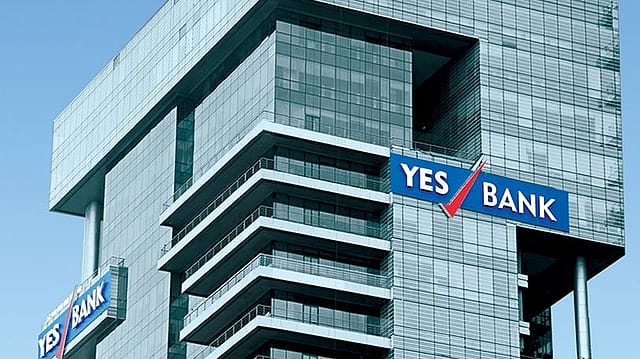YES Bank Q1 profit declines 91%
ADVERTISEMENT

It’s anything but life at usual for YES Bank, which ranked 61 on the list of Fortune India 500 companies last year.
The bank, under the leadership of managing director and CEO Ravneet Gill has announced its interim results for the quarter ended June 2019. Its net profit during the quarter declined 90.97% to ₹113.8 crore from ₹1,260.36 crore a year ago due to higher provisioning. This is the worst quarterly performance in the past 20 quarters. The bank had posted its first-ever quarterly loss of ₹1,506.64 crore in the March 2019 quarter.
Just before the quarterly results, the YES Bank stock was grabbing investor attention with over 10% rise on consecutive days. But a possibility of a strong comeback took the backseat with poor results for two quarters in a row.
On the BSE, the bank's stock closed the day 5.25% lower at ₹98.45. Interestingly, the stock saw the day’s high of ₹108.4, 1.67% above the previous day's close of ₹103.9. While the day’s low of ₹97.55 was a 6.11% decline over the previous day's closing price.
At the end of the 5.15 hours’ board meeting which began at 10.30 a.m. and concluded at 3.45 p.m., YES Bank’s management commentary called June 2019 as a ‘Quarter of Consolidation’, in which the bank has demonstrated strong resilience in revenues and asset quality. “We believe that the earnings trajectory should strengthen significantly from hereon,” the bank said in a release.
December 2025
The annual Fortune 500 India list, the definitive compendium of corporate performance, is out. This year, the cumulative revenue of the Fortune 500 India companies has breached $2 trillion for the first time. Plus, find out which are the Best B-schools in India.
But, the later seems to be wishful thinking of the bank which has seen its non-performing assets’ ratios rising in higher proportion in recent quarters. In June 2018, YES Bank’s gross and net non-performing assets as percentages of advances stood at 1.31% and 0.59%, respectively. The same ratios in June 2019 stand at 5.01% and 2.91%, respectively. On a quarterly basis, the ratios in the latest quarter grew from 3.22% and 1.18%, respectively.
Also, provisioning continues to rise for the bank, with an annual growth of over 185.2% in June 2019 to ₹1,784.1 crore, from ₹625.7 crore a year ago. Higher provisioning added the pain as the bank saw a mere 2.8% annual growth in its net interest income at ₹2,280.8 crore from ₹2,219.1 crore in June 2018. The bank’s non-interest income fell 24.9% to ₹91,272.7 crore from ₹1,694.1 crore in June 2018. Between the June 2018 quarter and the June 2019 quarter, net interest margin fell from 3.3% to 2.8%, while its cost to income ratio grew from 37.3% to 44.9%.
The other challenge facing YES Bank is the steady fall in the low-cost current account–savings account (CASA) deposits, which have fell from 35.1% in June 2018 to 33.1% in March 2019 and further down to 30.2% in June 2019. On the advances side, while overall annual growth was lower at 10.1% in June 2019, YES Bank tried to take refuge under the 43.3% annual growth in its retail banking advances, which now accounts for 18.3% of its total advances; these were 14% in June 2018. Beyond retail, YES Bank’s corporate banking advances grew by an annual 4.2% in June 2019, while small and micro enterprises grew 15.2%; medium enterprises saw a decline of 3.3%.
While investors may want to see a turnaround of fortunes at India's fifth largest private bank, the challenges for the bank are multi-fold and the going would be anything but easy.
